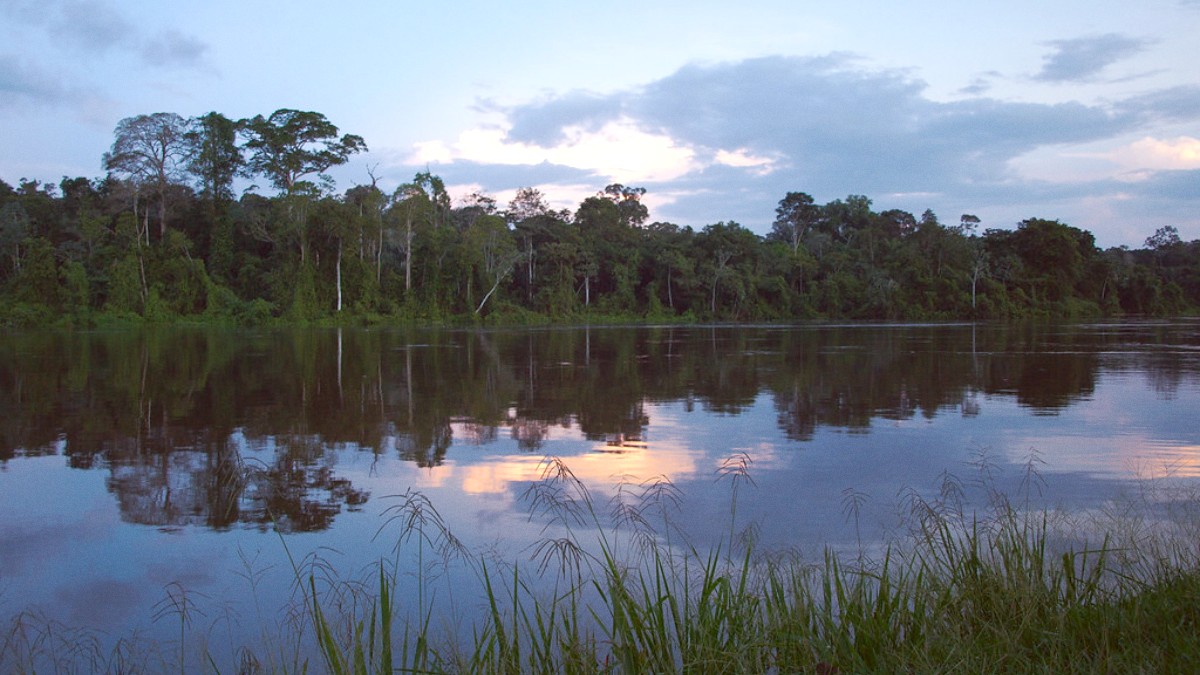
The Guianas
The Historic Inner City of Paramaribo, an UNESCO World Heritage Site, features unique well-preserved wooden colonial architecture from the 17th and 18th centuries. This area highlights Dutch colonization and the fusion of cultures shaping Suriname.
Explore the city on foot, starting at Onafhankelijkheidsplein (Independence Square), then strolling along Waterkant for scenic river views. Many buildings are still in use as government offices or private residences. Early morning or late afternoon visits present a peaceful experience.
Find and book tours to attractions and sightseeing experiences on GetYourGuide.
Suriname's history is heavily influenced by Dutch colonization, evident in its architecture and administration.
The legacy of slavery and plantation economy profoundly shaped the country's social and economic landscape.
Successive waves of immigration from India, Indonesia, China, and Lebanon contributed to its unique cultural mosaic.
The country gained full independence from the Netherlands in 1975, a pivotal moment in its modern history.
Periods of political instability and human rights issues like the December Murders (1982) form part of its recent past.
Suriname is a haven for nature lovers, with vast areas of untouched rainforest and unique ecosystems.
About 130 km south of Paramaribo, known for pristine rainforest, diverse wildlife (monkeys, birds), and views over Brokopondo Reservoir.
One of the world's largest protected rainforests with incredible biodiversity. Access is remote, requiring organized multi-day expeditions.
On the Atlantic coast, famous for sea turtle nesting beaches (Leatherback, Green, Olive Ridley, Hawksbill). Accessible by boat from Albina.
One of the largest man-made lakes globally, formed by damming the Suriname River, with eerie submerged trees. Viewable from Brownsberg or via boat tours.
Within Central Suriname Nature Reserve. Voltzberg is a granite inselberg with panoramic rainforest views. Raleighvallen is a major birdwatching site.
A large, shallow brackish water body, a premier birdwatching site with boat tours for unique ecosystem exploration.
Suriname's coastline has mainly mangrove forests and mudflats, not typical sandy swimming beaches. Rivers are transport arteries and include boat trips.
A small island in Brokopondo Reservoir, accessible by road. It includes basic accommodation and an unique atmosphere with submerged trees. A good spot for relaxation and fishing.
A historical canal in Commewijne district, built by enslaved people. It includes boat tours through mangroves and past old plantations, a historical and ecological experience.
Deep in the interior, this community-based eco-lodge brings profound cultural immersion with Maroon communities. It presents rainforest experiences away from main tourist trails.
Pre-book your experiences for a seamless journey.
Suriname's compact size belies its rich diversity of landscapes and cultures.
From the bustling capital to the serene rainforest, each area holds unique sightseeing adventures.
Beyond the Central Market, other local markets reveal a glimpse into daily life and authentic goods.
The deep interior rainforest lodges gain more accessibility as eco-tourism grows.
Capture Suriname's unique charm.
Discover spots rarely visited by tourists for an authentic experience.
Suriname's lesser-known spots present unique experiences.
Discover places like Stone Island in Brokopondo Reservoir, a peaceful spot for relaxation with unique submerged trees.
Explore Warappa Kreek, a historical canal built by enslaved people, offering boat tours through mangroves and past old plantations.
Danpaati River Lodge, a community-based eco-lodge, creates cultural immersion with Maroon communities away from typical tourist trails.
Explore local markets beyond the Central Market for a glimpse into daily life and to find authentic goods.
Deep interior rainforest lodges gain more accessibility as eco-tourism grows. These typically require organized tours but present profound experiences in untouched nature.
The juxtaposition of colonial architecture and lush tropical vegetation in Paramaribo creates striking photo opportunities.
Capture the unique landscapes of the Brokopondo Reservoir with its ghostly submerged trees.
Aim for close-up wildlife shots in the rainforest with the right equipment for memorable captures.
Gain understanding of Suriname's diverse cultural fabric.
Witness the unique coexistence of faiths in Paramaribo.
Local tourist information centers or hotel concierges can present up-to-date details on attraction opening hours and special events.
Consider hiring a local guide, especially for historical tours, for insights and a richer experience.
Strategic planning optimizes your exploration of Suriname's attractions.
Allocate at least 2-3 days to fully explore the capital's historical and cultural sites.
Plan multi-day trips for rainforest and wildlife immersion.
Reputable operators ensure safety and a quality experience.
Many hotels can recommend trusted local tour operators.
Sea turtle nesting season runs from February to August, with peak activity between April and July.
Planning for comfortable travel.
Remote areas may have limited infrastructure; plan accordingly with tour operators.
Hat, sunglasses, and high-SPF sunscreen are advisable due to strong equatorial sun.
Essential, especially for jungle visits and evenings to guard against mosquitoes.
Sturdy walking shoes for city exploration and hiking boots for nature parks.